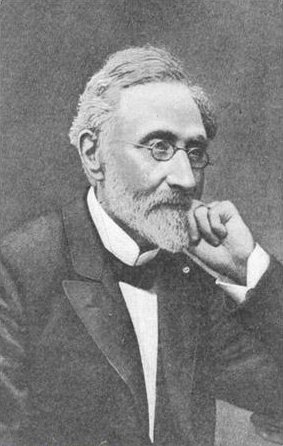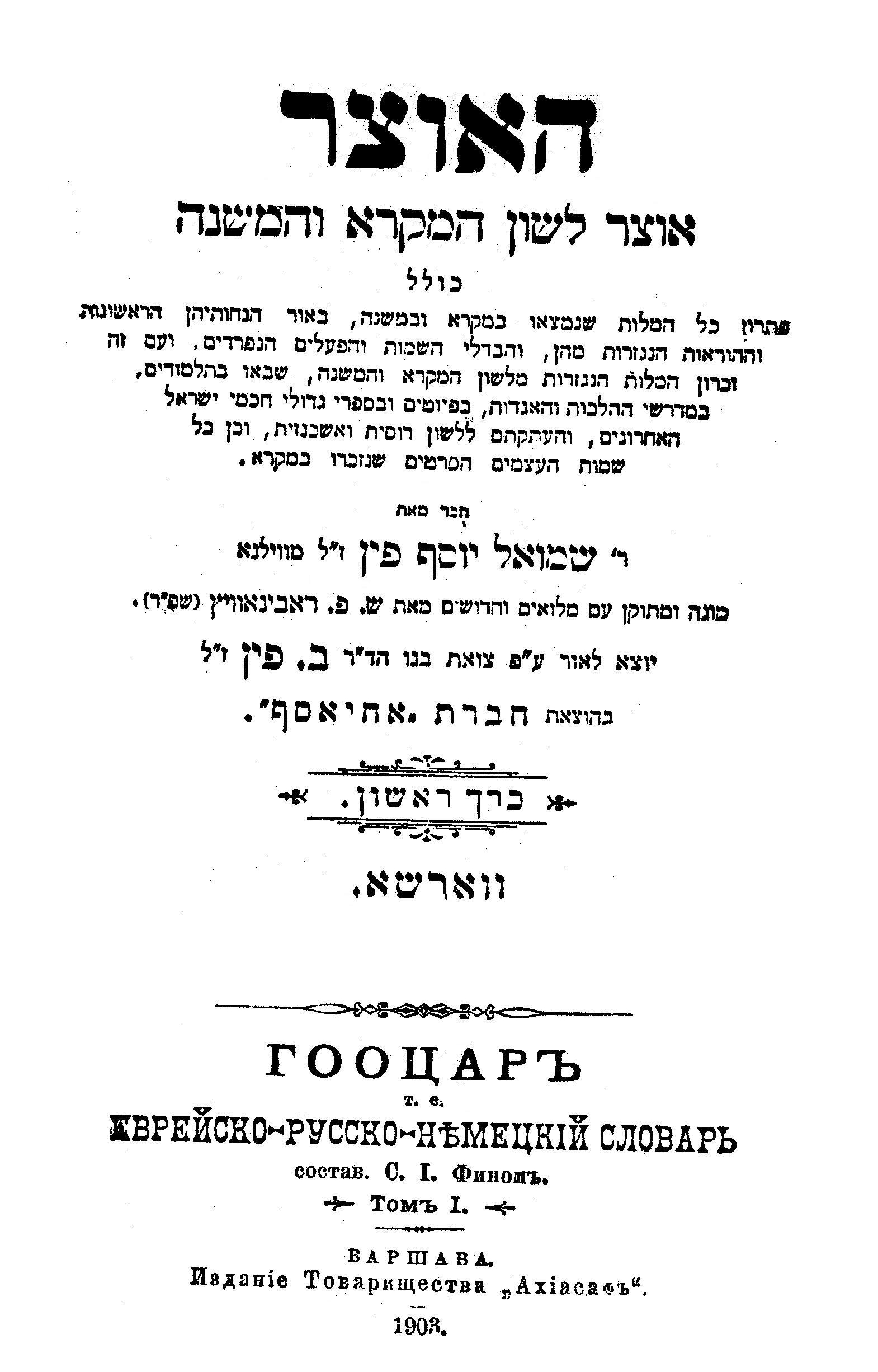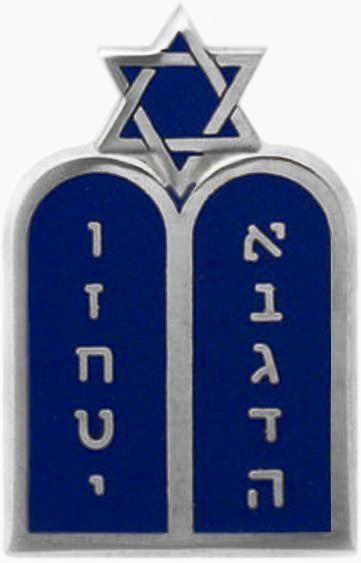|
Abraham Klausner (Austrian Rabbi)
Abraham Klausner was an Austrian rabbi and ritualist who flourished at Vienna in the second half of the fourteenth century. He shared the rabbinical office at Vienna with Meir ben Baruch Halevi (Jacob Weil, Responsa, No. 151). Aaron Blumlein and , were among his contemporaries. Two of his pupils were Isaac Tyrnau and Jacob Mölln. His collection of ritual customs ("''minhagim''"), with his notes, was published at Riva di Trento in 1559. The editor of Mölln's "''Minhage Maharil''" added in several cases some of the ''minhagim'' collected by Klausner. His responsa are referred to by Israel Isserlein in his "''Pesaḳim u-Ketabim''" (No. 6). Its bibliography: * Fuenn, ''Keneset Yisrael''p. 63 * Grätz, ''Gesch.'' 3d ed., viii. 11; *Michael Michael may refer to: People * Michael (given name), a given name * Michael (surname), including a list of people with the surname Michael Given name "Michael" * Michael (archangel), ''first'' of God's archangels in the Jewish, Christia ... [...More Info...] [...Related Items...] OR: [Wikipedia] [Google] [Baidu] |
Austrians
, pop = 8–8.5 million , regions = 7,427,759 , region1 = , pop1 = 684,184 , ref1 = , region2 = , pop2 = 345,620 , ref2 = , region3 = , pop3 = 197,990 , ref3 = , region4 = , pop4 = 40,300–65,090 , ref4 = , region5 = , pop5 = 45,530 , ref5 = , region6 = , pop6 = 21,600–25,000 , ref6 = , region7 = , pop7 = 20,000 , ref7 = , region8 = , pop8 = 16,331 , ref8 = , region9 = , pop9 = 15,771 , ref9 = , region10 = , pop10 = 14,000 , ref10 = , region11 = , pop11 = 12,000 , ref11 = , region12 = , pop12 = 10,000 , ref12 = , region13 = , pop13 = 9,800 , ref13 = , region14 = , pop14 = 9,044 , ref14 = , region15 = , pop15 ... [...More Info...] [...Related Items...] OR: [Wikipedia] [Google] [Baidu] |
Israel Isserlein
Israel Isserlin (ישראל איסרלן; Israel Isserlein ben Petachia; 1390 in Maribor, Duchy of Styria – 1460 in Wiener Neustadt, Lower Austria) was a Talmudist, and Halakhist, best known for his ''Terumat HaDeshen'', which served as one source for '' HaMapah'', the component of the ''Shulkhan Arukh'' by Moses Isserles. He is also known as Israel of Neustadt, Israel of Marpurk, and ''Maharai''. Personal life Even though Regensburg in Bavaria is often quoted in literature as Isserlein's birthplace it is now clear that he was born in the Styrian Maribor, present-day Slovenia, in the last decade of the 14th century. As a son of R. Petachia of Maribor he came from a well-known scholarly family. His grandfather Rabbi Chaim, named Henschel of Hainburg or Hetschlein of Herzogenburg was well-versed in Jewish learning, which held especially for Isserlein's great-grandfather R. Israel of Krems. R. Shalom of Neustadt was related to him. He is considered to be the most influent ... [...More Info...] [...Related Items...] OR: [Wikipedia] [Google] [Baidu] |
Rabbis From Vienna
A rabbi () is a spiritual leader or religious teacher in Judaism. One becomes a rabbi by being ordained by another rabbi – known as '' semikha'' – following a course of study of Jewish history and texts such as the Talmud. The basic form of the rabbi developed in the Pharisaic (167 BCE–73 CE) and Talmudic (70–640 CE) eras, when learned teachers assembled to codify Judaism's written and oral laws. The title "rabbi" was first used in the first century CE. In more recent centuries, the duties of a rabbi became increasingly influenced by the duties of the Protestant Christian minister, hence the title " pulpit rabbis", and in 19th-century Germany and the United States rabbinic activities including sermons, pastoral counseling, and representing the community to the outside, all increased in importance. Within the various Jewish denominations, there are different requirements for rabbinic ordination, and differences in opinion regarding who is recognized as a rabbi. For ex ... [...More Info...] [...Related Items...] OR: [Wikipedia] [Google] [Baidu] |
Place Of Death Unknown
Place may refer to: Geography * Place (United States Census Bureau), defined as any concentration of population ** Census-designated place, a populated area lacking its own municipal government * "Place", a type of street or road name ** Often implies a dead end (street) or cul-de-sac * Place, based on the Cornish word "plas" meaning mansion * Place, a populated place, an area of human settlement ** Incorporated place (see municipal corporation), a populated area with its own municipal government * Location (geography), an area with definite or indefinite boundaries or a portion of space which has a name in an area Placenames * Placé, a commune in Pays de la Loire, Paris, France * Plače, a small settlement in Slovenia * Place (Mysia), a town of ancient Mysia, Anatolia, now in Turkey * Place, New Hampshire, a location in the United States * Place House, a 16th-century mansion largely remodelled in the 19th century, in Fowey, Cornwall * Place House, a 19th-century mansion on ... [...More Info...] [...Related Items...] OR: [Wikipedia] [Google] [Baidu] |
Place Of Birth Unknown
Place may refer to: Geography * Place (United States Census Bureau), defined as any concentration of population ** Census-designated place, a populated area lacking its own municipal government * "Place", a type of street or road name ** Often implies a dead end (street) or cul-de-sac * Place, based on the Cornish word "plas" meaning mansion * Place, a populated place, an area of human settlement ** Incorporated place (see municipal corporation), a populated area with its own municipal government * Location (geography), an area with definite or indefinite boundaries or a portion of space which has a name in an area Placenames * Placé, a commune in Pays de la Loire, Paris, France * Plače, a small settlement in Slovenia * Place (Mysia), a town of ancient Mysia, Anatolia, now in Turkey * Place, New Hampshire, a location in the United States * Place House, a 16th-century mansion largely remodelled in the 19th century, in Fowey, Cornwall * Place House, a 19th-century mansion on ... [...More Info...] [...Related Items...] OR: [Wikipedia] [Google] [Baidu] |
14th-century Austrian Rabbis
As a means of recording the passage of time, the 14th century was a century lasting from 1 January 1301 ( MCCCI), to 31 December 1400 (MCD). It is estimated that the century witnessed the death of more than 45 million lives from political and natural disasters in both Europe and the Mongol Empire. West Africa experienced economic growth and prosperity. In Europe, the Black Death claimed 25 million lives wiping out one third of the European population while the Kingdom of England and the Kingdom of France fought in the protracted Hundred Years' War after the death of Charles IV, King of France led to a claim to the French throne by Edward III, King of England. This period is considered the height of chivalry and marks the beginning of strong separate identities for both England and France as well as the foundation of the Italian Renaissance and Ottoman Empire. In Asia, Tamerlane (Timur), established the Timurid Empire, history's third largest empire to have been ever establish ... [...More Info...] [...Related Items...] OR: [Wikipedia] [Google] [Baidu] |
Heimann Joseph Michael
Heimann (Hayyim) Michael (April 12, 1792 – June 10, 1846) was a Hebrew bibliographer born at Hamburg. He showed great acuteness of mind in early childhood, had a phenomenal memory, and was an indefatigable student. He studied Talmudics and received private instruction in all the branches of a regular school education. He was a born bibliophile, and began to collect valuable works when still a boy of twelve. With his progress in Hebrew literature his love for books increased also, the result of which was his magnificent library of 862 manuscripts and 5,471 printed works, covering all branches of Hebrew literature. There were few books in his collection which he had not read, and he undertook the preparation of a full catalog of it. As far as he accomplished this task, it was the foundation of the ''Ozerot Hayyim, Katalog der Michael'schen Bibliothek'', Hamburg, 1848. Michael took an interest not only in Jewish literature, but in all the intellectual movements of the day, as is s ... [...More Info...] [...Related Items...] OR: [Wikipedia] [Google] [Baidu] |
Heinrich Graetz
Heinrich Graetz (; 31 October 1817 – 7 September 1891) was amongst the first historians to write a comprehensive history of the Jewish people from a Jewish perspective. Born Tzvi Hirsch Graetz to a butcher family in Xions (now Książ Wielkopolski), Grand Duchy of Posen, in Prussia (now in Poland), he attended Breslau University, but since Jews at that time were barred from receiving Ph.D.s there, he obtained his doctorate from the University of Jena.''Encyclopaedia Judaica'' (2007, 2nd ed.) entry on "Graetz, Heinrich," by Shmuel Ettinger and Marcus Pyka After 1845 he was principal of the school of the [...More Info...] [...Related Items...] OR: [Wikipedia] [Google] [Baidu] |
Samuel Joseph Fuenn
Samuel Joseph Fuenn (; 15 October 1818 – 11 January 1891), also known as Rashi Fuenn () and Rashif (), was a Lithuanian Hebrew writer, scholar, printer, and editor. He was a leading figure of the eastern European Haskalah, and an early member of Ḥovevei Zion. Biography Fuenn was born in Vilna, Russian Empire, the son of merchant and Torah scholar Yitsḥak Aizik Fuenn of Grodno. Though he received a traditional religious education until the age of 17, he also acquired an extensive general knowledge of German literature and other secular subjects, and became proficient in Russian, French, Latin, Polish, and English. He afterwards joined Vilna's circle of young ''maskilim''. In 1848 the government appointed him teacher of Hebrew and Jewish history in the newly founded rabbinical school of Vilna. Fuenn filled this position with great distinction till 1856, when he resigned. The government then appointed him superintendent of the Jewish public schools in the district of Vilna, ... [...More Info...] [...Related Items...] OR: [Wikipedia] [Google] [Baidu] |
Riva Di Trento
Riva del Garda (''Rìva'' in local dialect) is a town and ''comune'' in the northern Italian province of Trento of the Trentino Alto Adige region. It is also known simply as ''Riva'' and is located at the northern tip of Lake Garda. History Riva del Garda belonged to the Republic of Venice, the Bishopric of Trent, the Napoleonic Kingdom of Italy and later (1815–1918) to the Austro-Hungarian Empire (when it was known as ). During the Third Italian War of Independence, Riva del Garda was an important supply base for the Austrian navy and was the only town on the lake captured by Italian forces. In 1918, after the end of World War I, Riva del Garda, with the rest of the Trentino, became part of the Kingdom of Italy. Riva was the terminus for the long Mori–Arco–Riva railway line, opened in 1891. However, the railway line closed in 1936 and the railway terminus has been converted into a restaurant. Austrian dictator Kurt Schuschnigg was born in the town in 1897 and was of ... [...More Info...] [...Related Items...] OR: [Wikipedia] [Google] [Baidu] |
Rabbi
A rabbi () is a spiritual leader or religious teacher in Judaism. One becomes a rabbi by being ordained by another rabbi – known as '' semikha'' – following a course of study of Jewish history and texts such as the Talmud. The basic form of the rabbi developed in the Pharisaic (167 BCE–73 CE) and Talmudic (70–640 CE) eras, when learned teachers assembled to codify Judaism's written and oral laws. The title "rabbi" was first used in the first century CE. In more recent centuries, the duties of a rabbi became increasingly influenced by the duties of the Protestant Christian minister, hence the title " pulpit rabbis", and in 19th-century Germany and the United States rabbinic activities including sermons, pastoral counseling, and representing the community to the outside, all increased in importance. Within the various Jewish denominations, there are different requirements for rabbinic ordination, and differences in opinion regarding who is recognized as a rabbi. For ex ... [...More Info...] [...Related Items...] OR: [Wikipedia] [Google] [Baidu] |
Minhag
''Minhag'' ( he, מנהג "custom", classical pl. מנהגות, modern pl. , ''minhagim'') is an accepted tradition or group of traditions in Judaism. A related concept, ''Nusach (Jewish custom), Nusach'' (), refers to the traditional order and form of the Jewish services, prayers. Etymology The Hebrew root N-H-G () means primarily "to drive" or, by extension, "to conduct (oneself)". The actual word ''minhag'' appears twice in the Hebrew Bible, both times in the same verse, and translated as "driving": Homiletically, one could argue that the use of the word ''minhag'' in Jewish law reflects its Biblical Hebrew origins as "the (manner of) driving (a chariot)". Whereas ''Halakha'' (law), from the word for walking-path, means the path or road set for the journey, ''minhag'' (custom), from the word for driving, means the manner people have developed themselves to travel down that path more quickly. The present use of ''minhag'' for custom may have been influenced by the Arabic ... [...More Info...] [...Related Items...] OR: [Wikipedia] [Google] [Baidu] |





